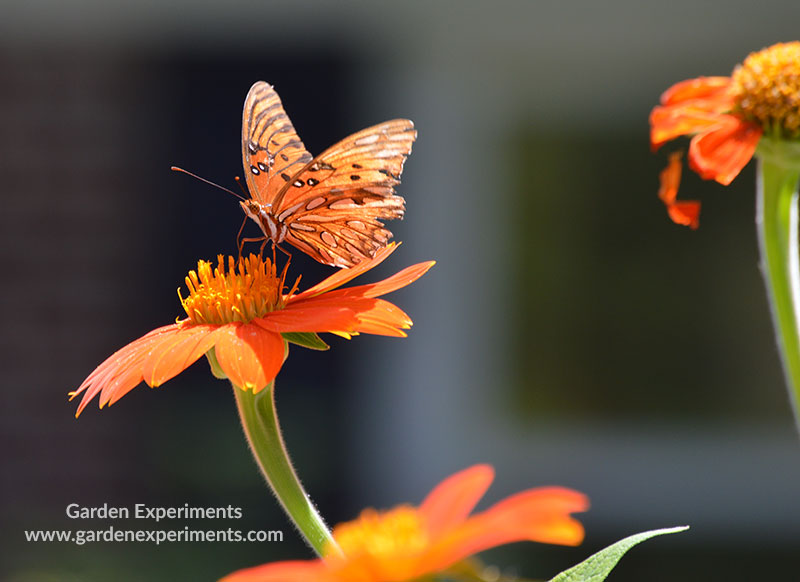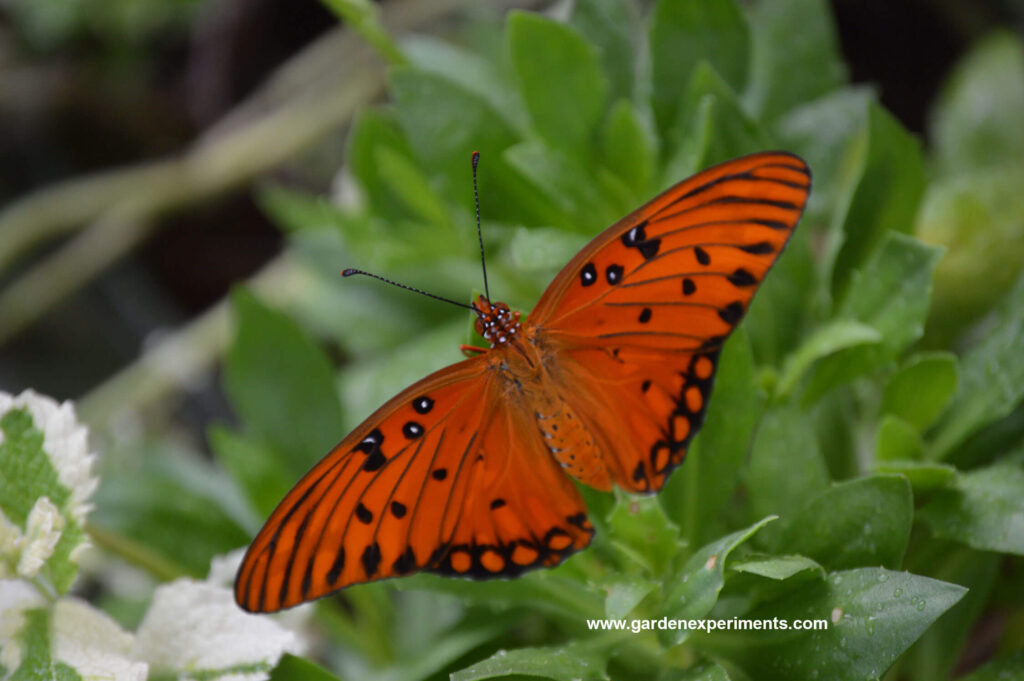Updated Sept. 5, 2025
You can attract Gulf fritillary butterflies to your yard and garden by providing food plants (flowers), caterpillar host plants, water, and shelter for the butterflies. Here are some tips for the plants to include in your garden for Gulf fritillaries.
Gulf fritillary butterflies (Dione vanillae — formerly Agraulis vanillae) are orange, black, and silver-spotted. While some may mistake them for the monarch butterfly, their appearance is actually quite different.
Side-by-Side Comparison of the Monarch and Gulf Fritillary Butterflies
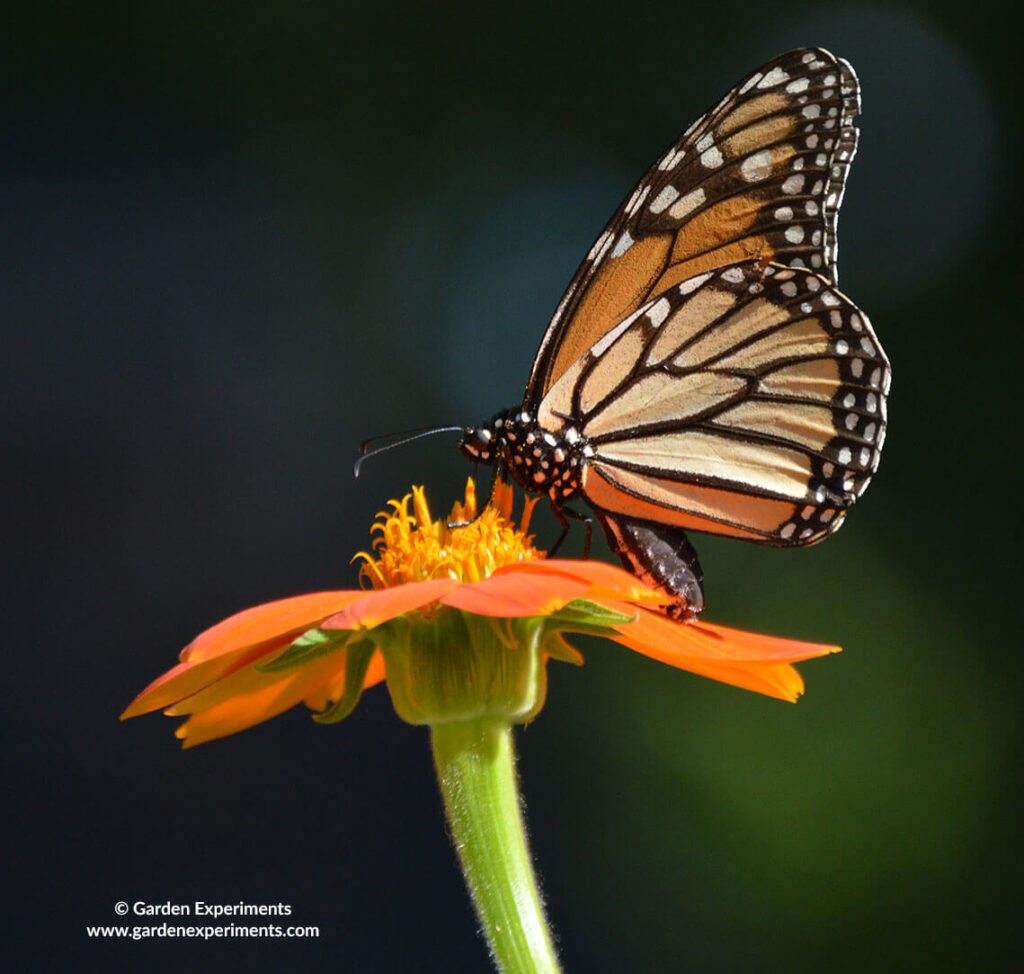
Monarch Butterfly Appearance
- Orange-brown color with black veins and white spots along the edge of the wing
- White spots long the lack body
- Wing spans between 3.5 to 4 inches
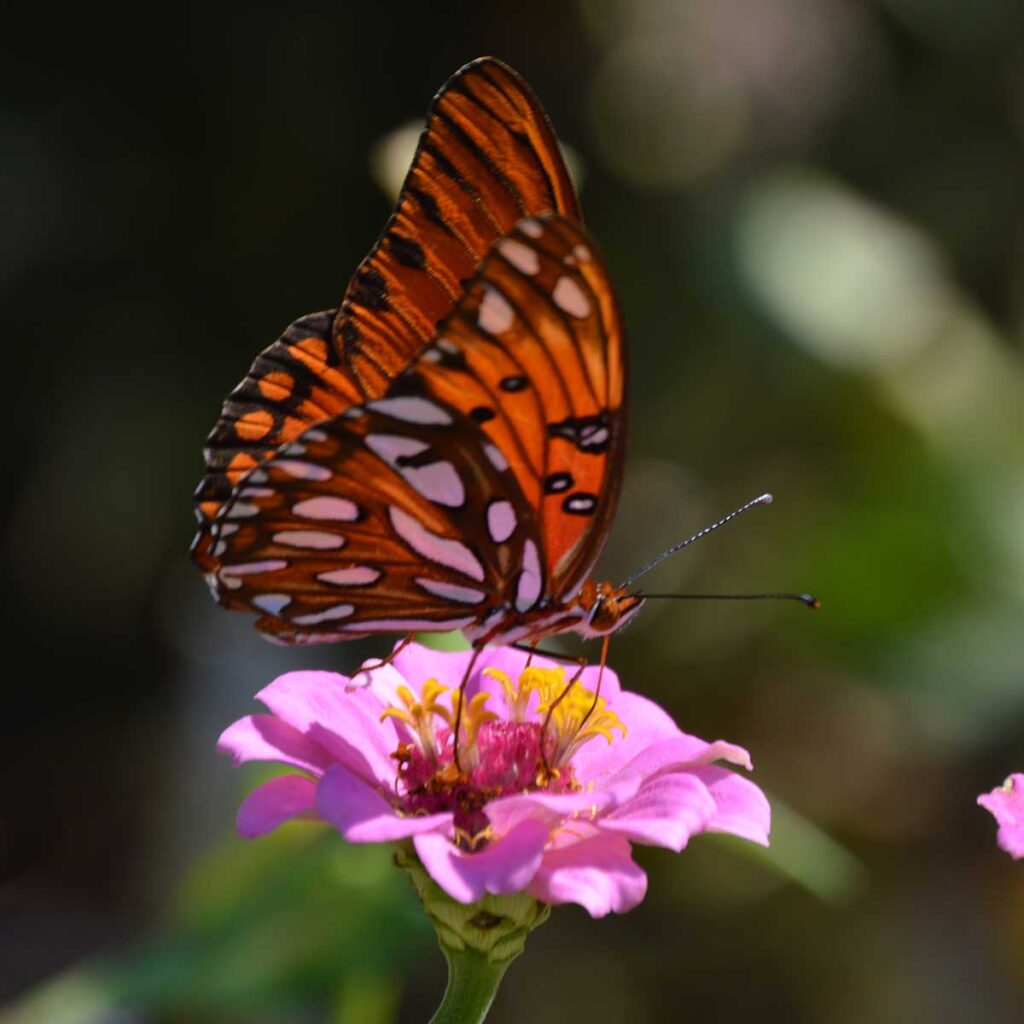
Gulf Fritillary Butterfly Appearance
- Brighter orange color with orange spots in the black trim on the top of the butterfly. Sometimes there are three silver spots on the top of the forewing.
- Silver spots lined in black trim on the bottom of the wings
- Body is orange and white striped
- Wing spans between 2.5 to 3.5 inches
Habitat and Migration
Gulf fritillaries spend the winter in Florida and migrate north in the summer. This orange butterfly is primarily found in the southern parts of the U.S., but it can also be found in Mexico, Central America, and parts of South America.
They can be found in open fields, gardens, in the grass and fields alongside roads, and even in open forests. The Gulf fritillary does not undertake long migrations, like the monarch butterfly. Instead, it stays within its local range and may migrate across states or regions.
Host Plant (Purple Passionflower Vine) for the Gulf Fritillary Butterfly
The native purple passionflower vine (Passiflora incarnata) is the host plant for the Gulf fritillary caterpillar. I have this vine planted on a trellis in my front garden, which is covered in caterpillars each year.
The caterpillars are voracious eaters and may remove all of the leaves from the vine some years. It’s amusing to watch the bright orange caterpillars with black spikes munching away on the vines. The caterpillars start out very tiny but they grow to be about 1.5 inches long. When they are ready to form a chrysalis, they migrate to higher spots (like the eaves of our house) to make cocoons. Their chrysalises look very much like dead leaves.

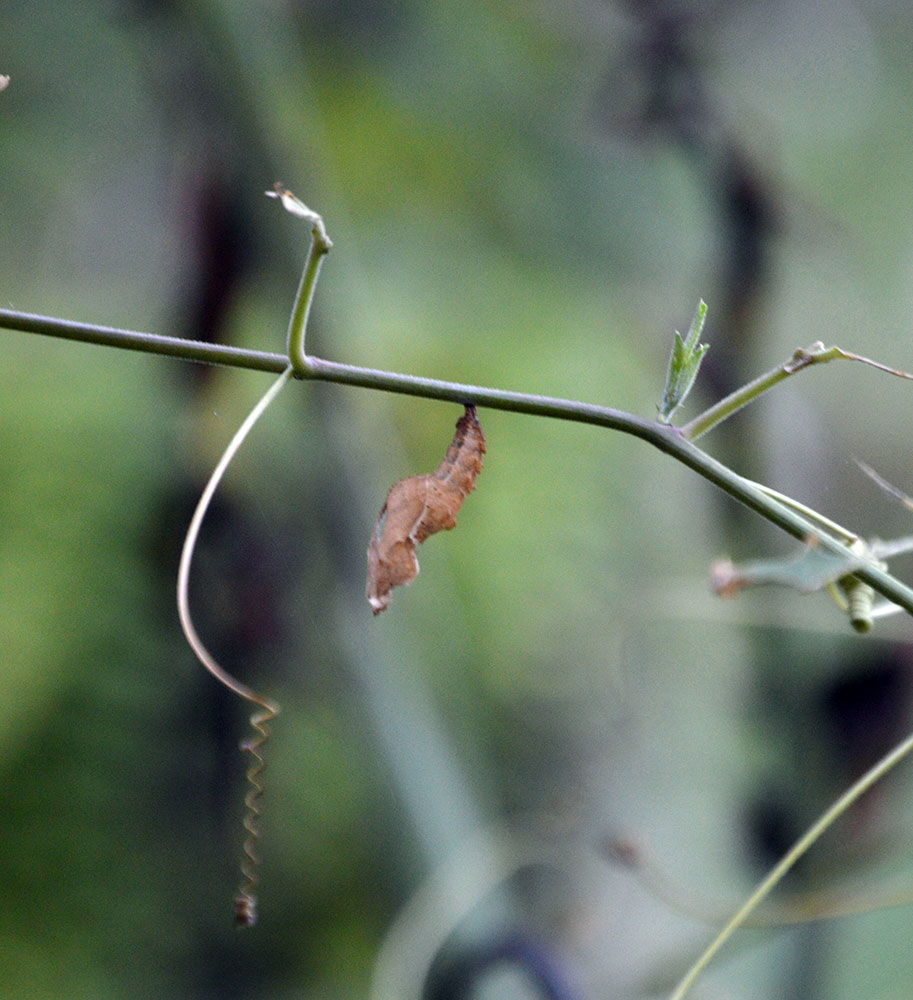
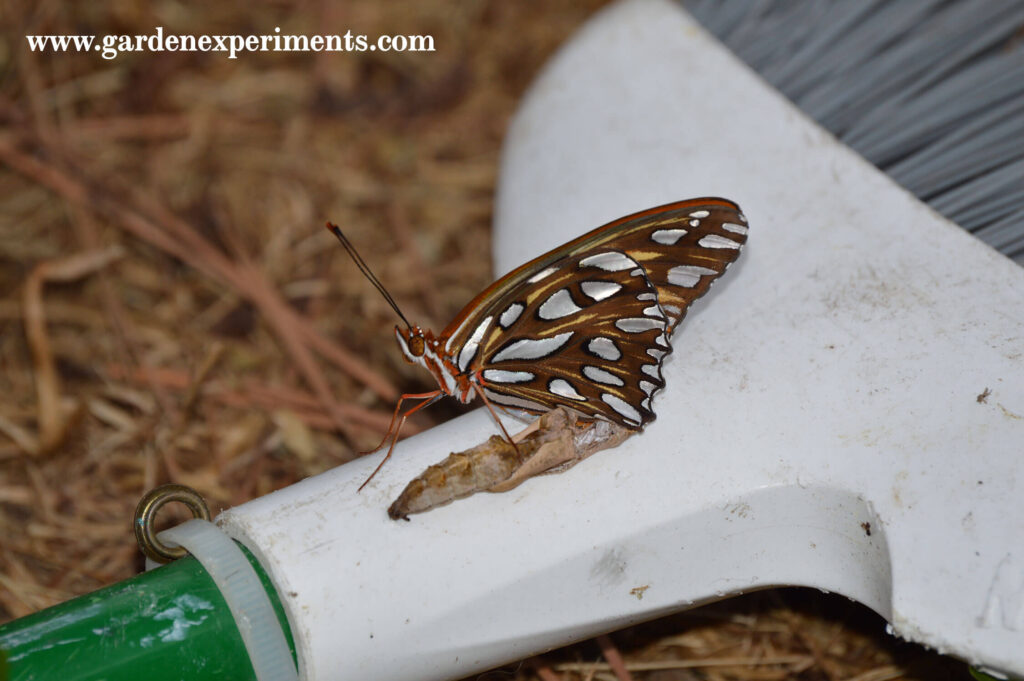
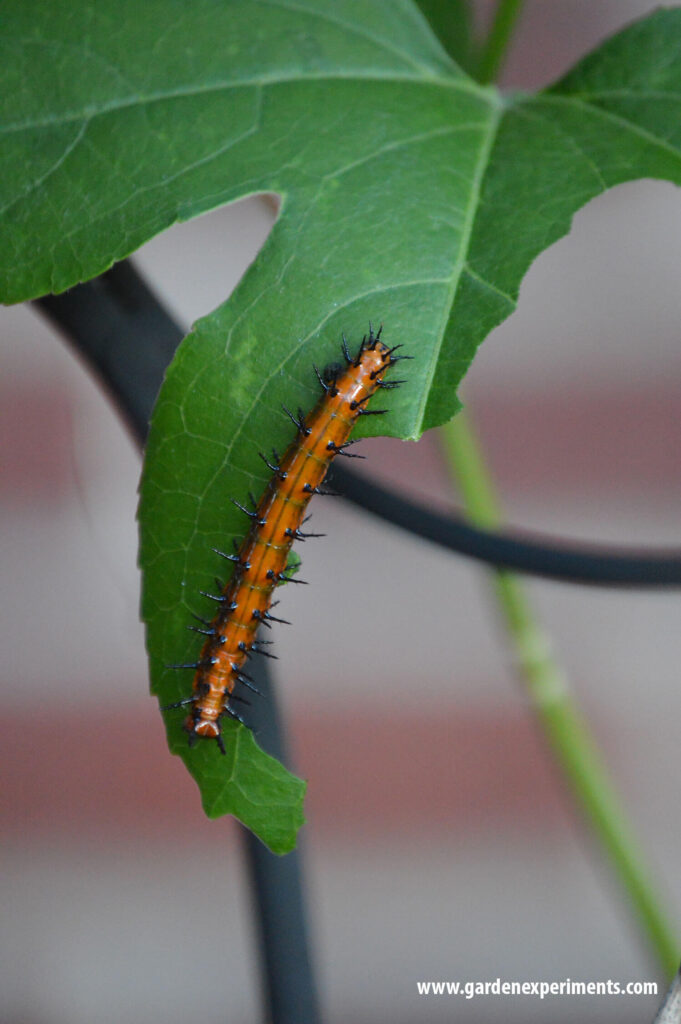
To help this butterfly thrive and reproduce, plant the host plant for their larvae: the passionflower vine. This native butterfly host plant is the number one item that should be in your garden to attract these butterflies. They seem to be able to find this vine from far away. I assume that it must release some kind of chemical or scent that the butterflies can detect.
Learn how to grow the purple passionflower vine.
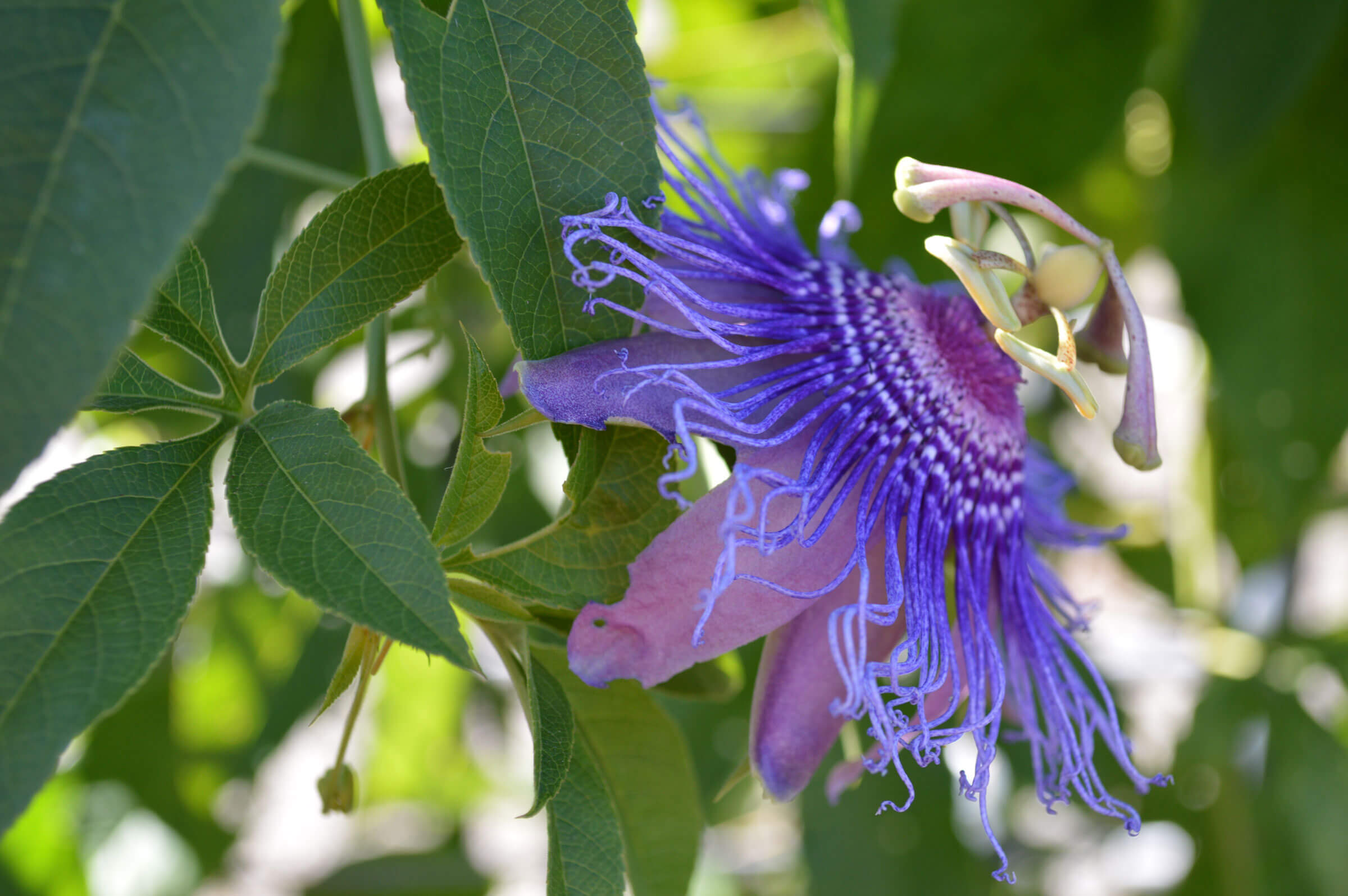
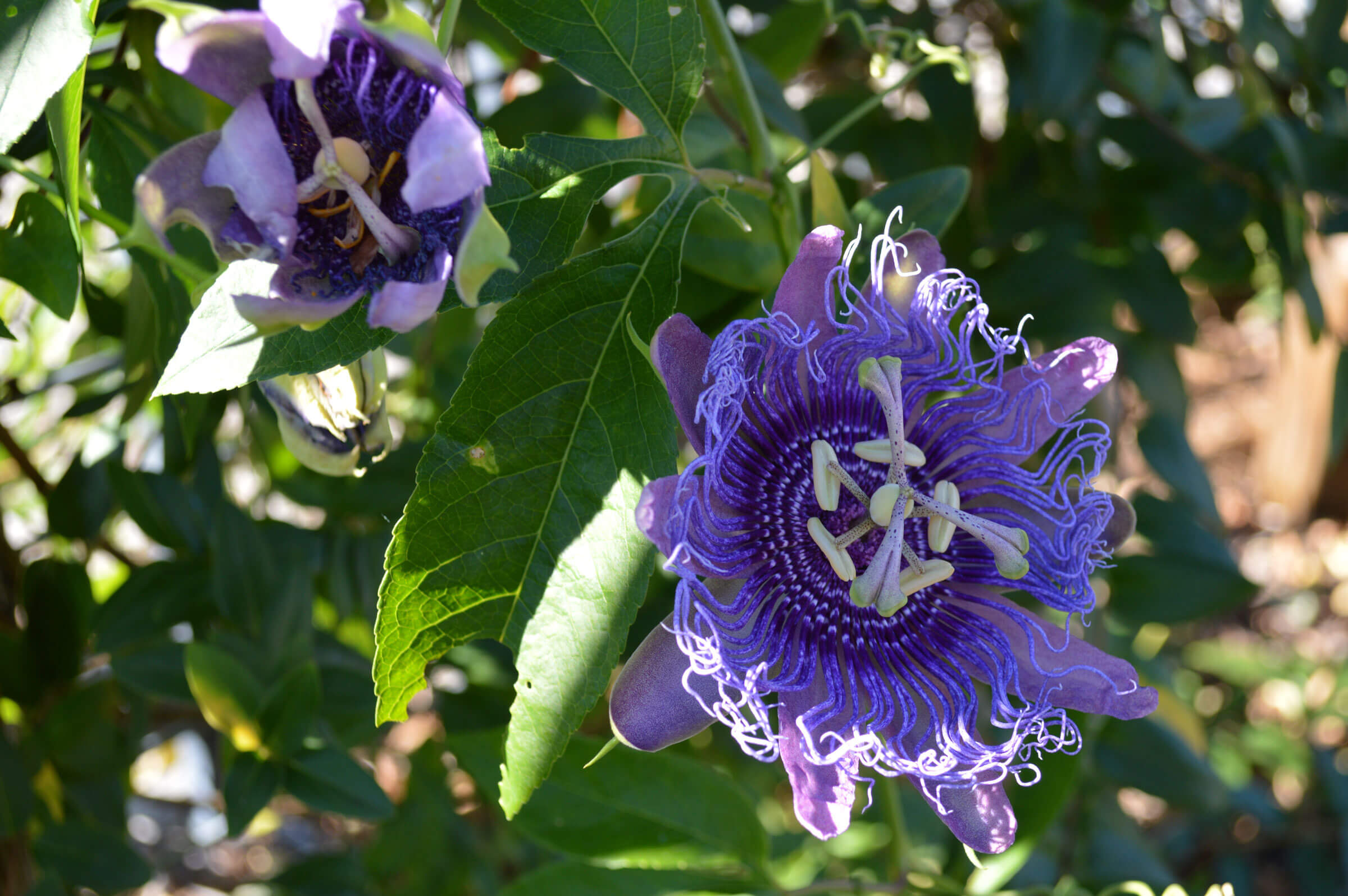
What to Plant in Your Butterfly Garden for Gulf Fritillary Butterflies
If you’d like to encourage these butterflies to spend time in your garden, there are a few things you should do. As with all wildlife, they require food and water, shelter, and places to reproduce. By planting flowers that feed the adult butterflies and the purple passionflower vine that they require for reproduction, your garden will attract Gulf fritillary butterflies.
Best Flowering Plants to Attract Gulf Fritillary Butterflies in the Southeast
Providing flowering plants that offer nectar is an important step to bringing Gulf fritillary butterflies to your yard. I generally recommend using native plants in your butterfly garden, especially when feeding native butterflies.
Native Plants for Butterflies
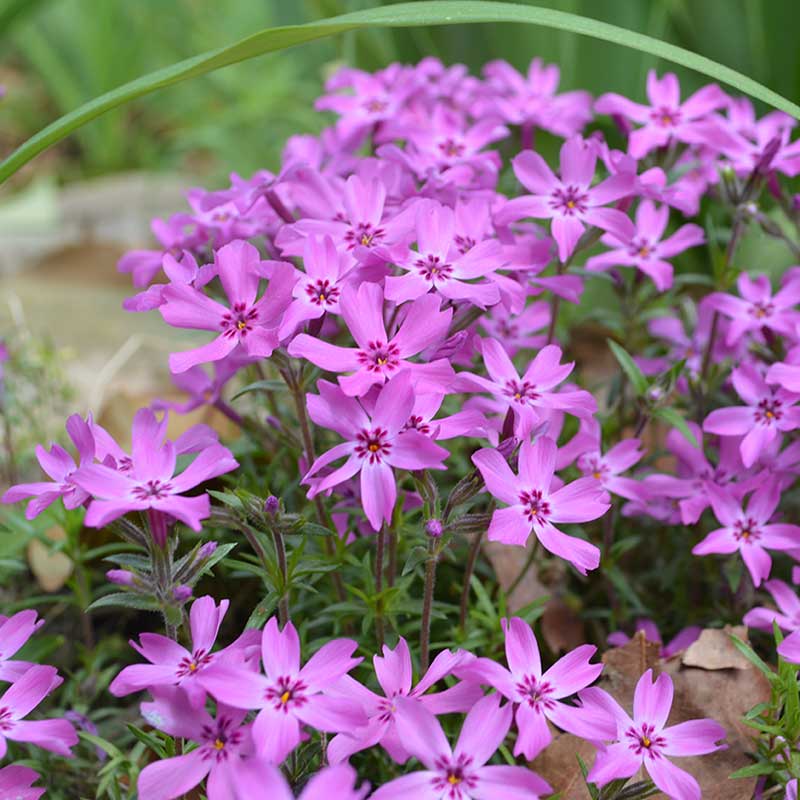
Creeping Phlox
Phlox subulata
Blooms in early spring
Perennial
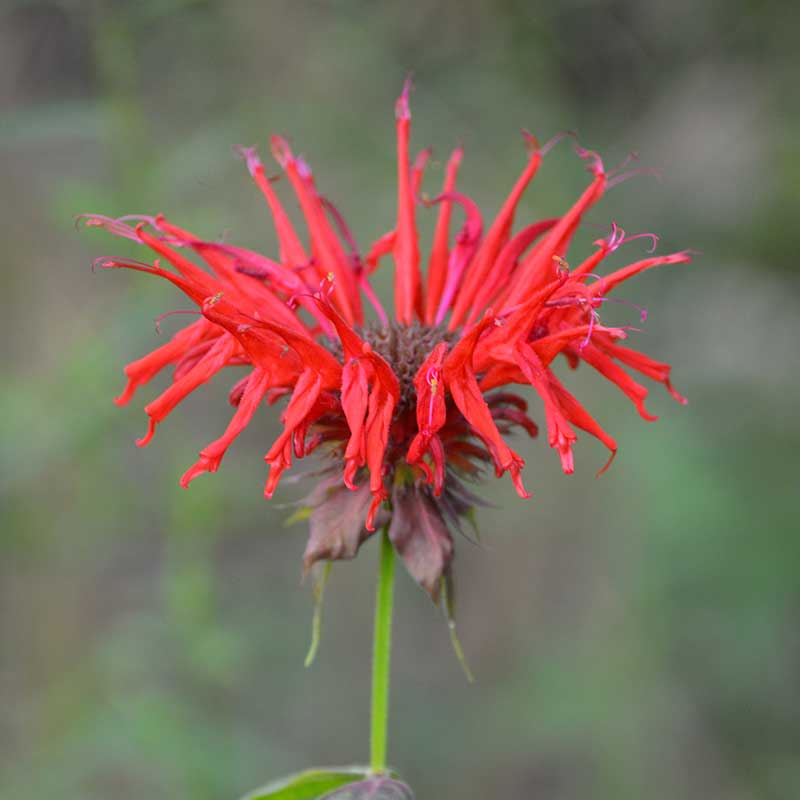
Bee Balm
Monarda spp.
Blooms in spring
Perennial

Joe Pye Weed
Eutrochium spp.
Blooms July – Sept.
Perennial
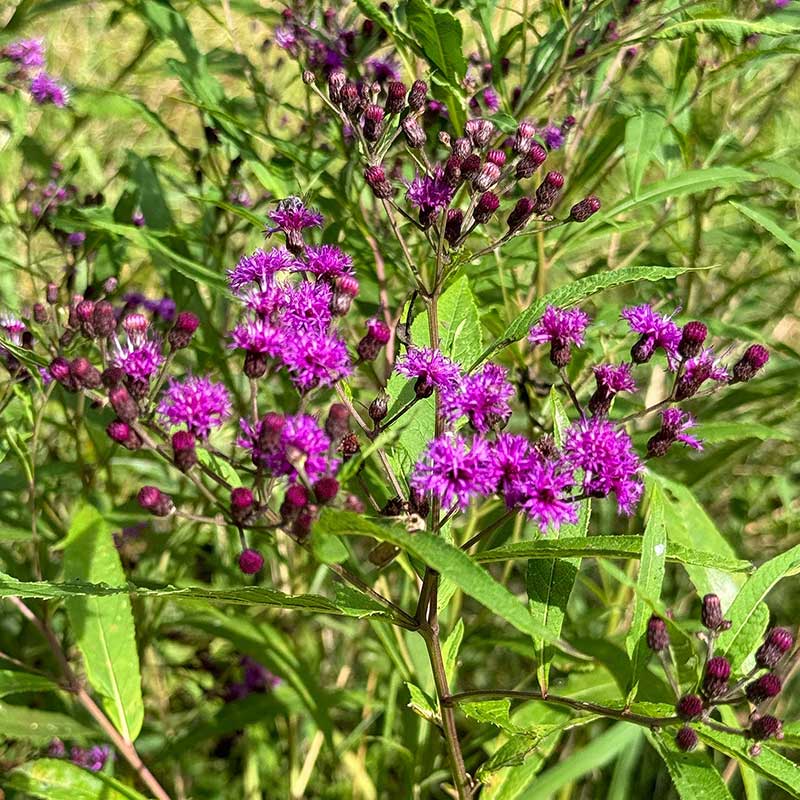
Ironweed
Vernonia spp.
Blooms in late summer and fall
Perennial
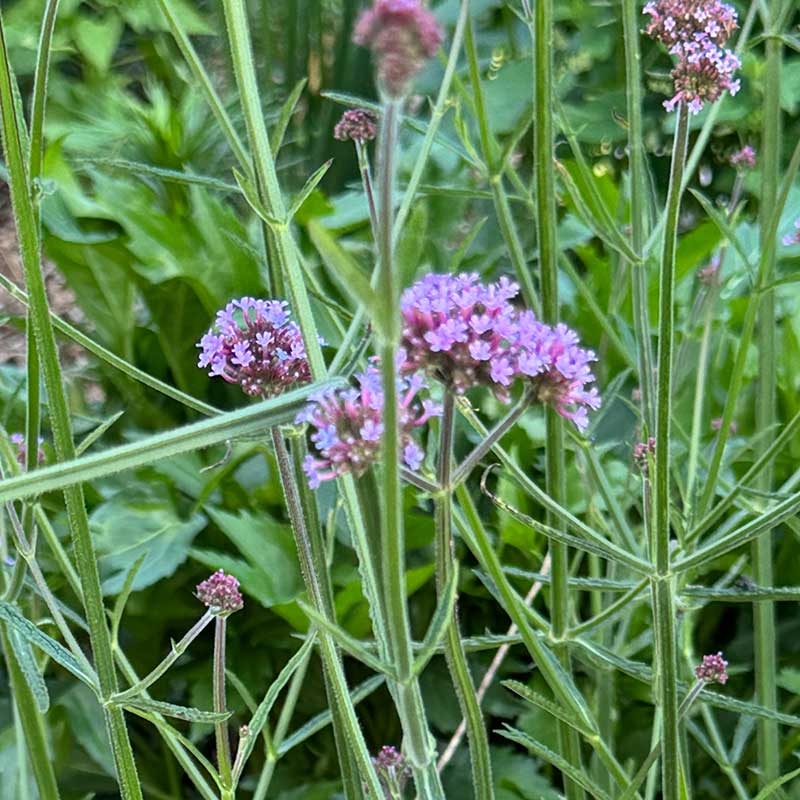
Tall Verbena
Verbena bonariensis
Blooms in mid-summer to late fall
Perennial
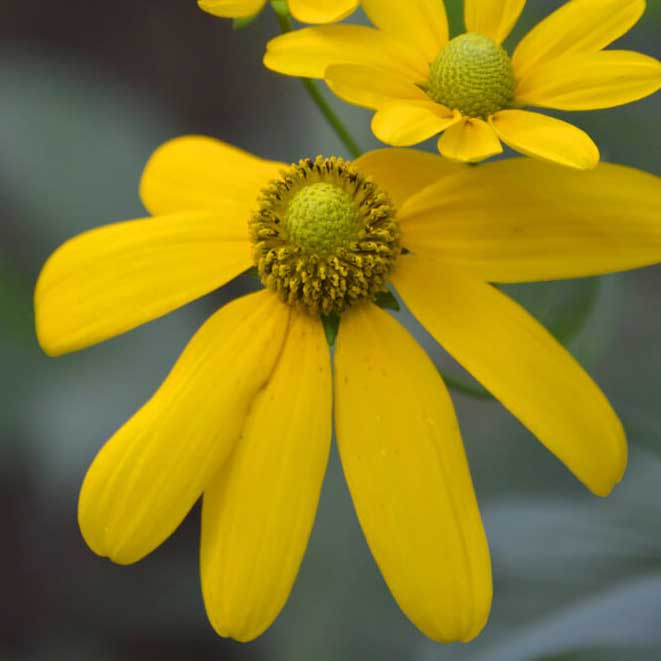
Cutleaf Coneflower
Rudbeckia laciniata
Blooms July – Oct.
Perennial
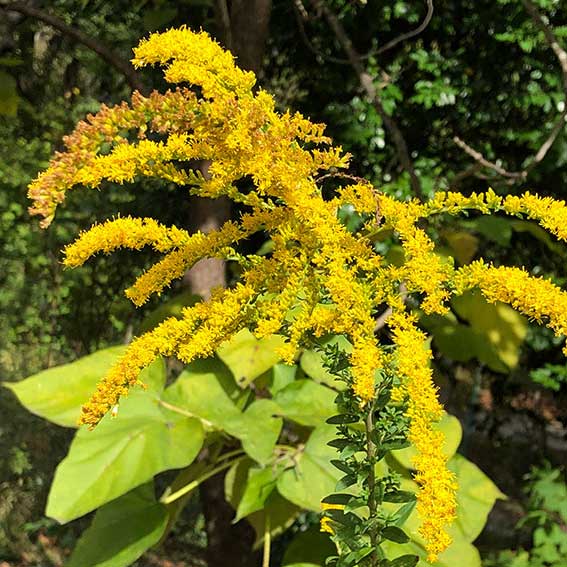
Goldenrod
Solidago spp.
Blooms in late summer and fall
Perennial
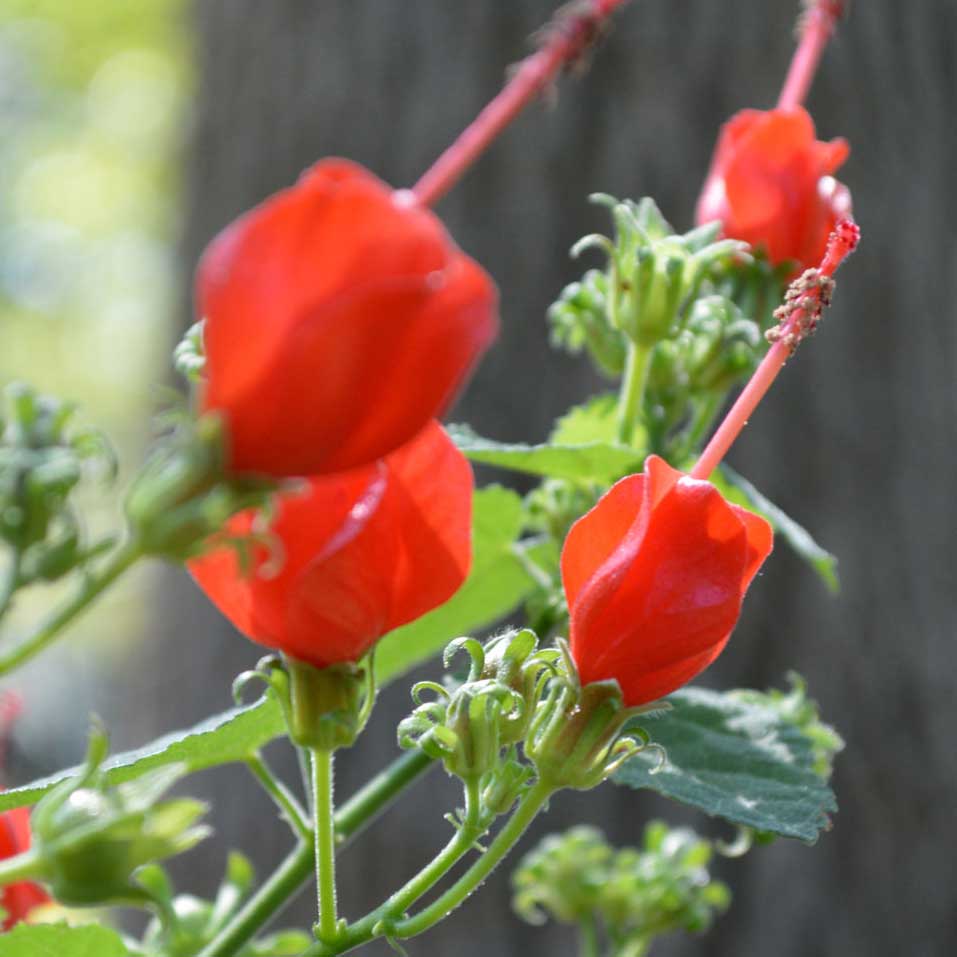
Turk’s Cap
Malvaviscus arboreus
Blooms in mid-summer to late fall
Perennial
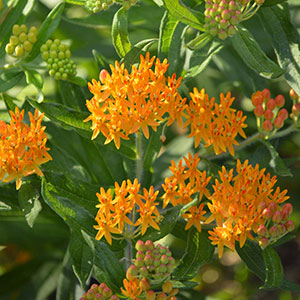
Butterfly Weed
Asclepias tuberosa
Blooms June – August
Perennial
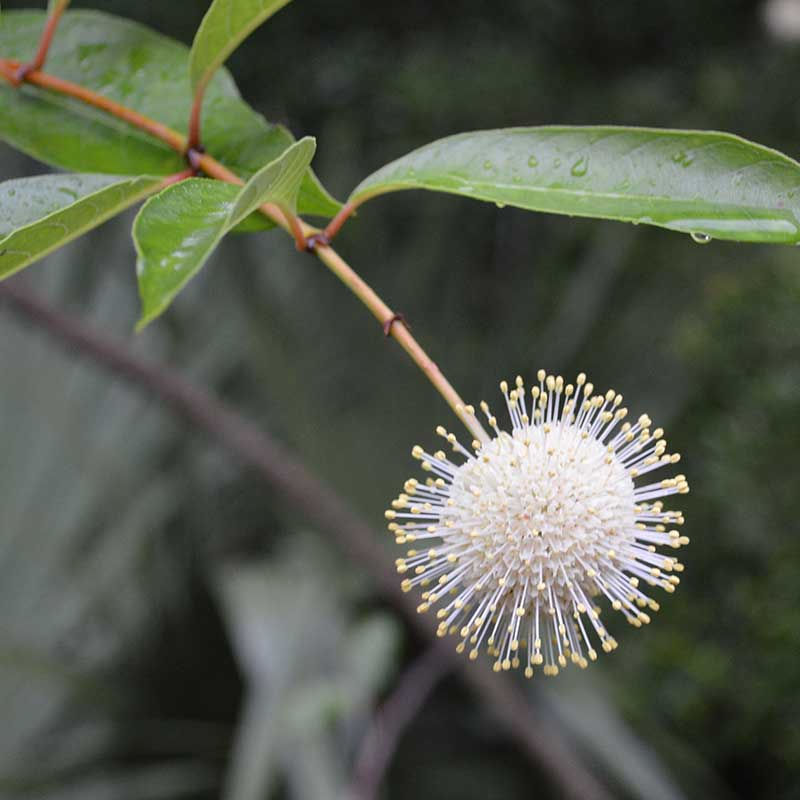
Buttonbush
Cephalanthus occidentalis
Blooms in June to Sept.
Perennial
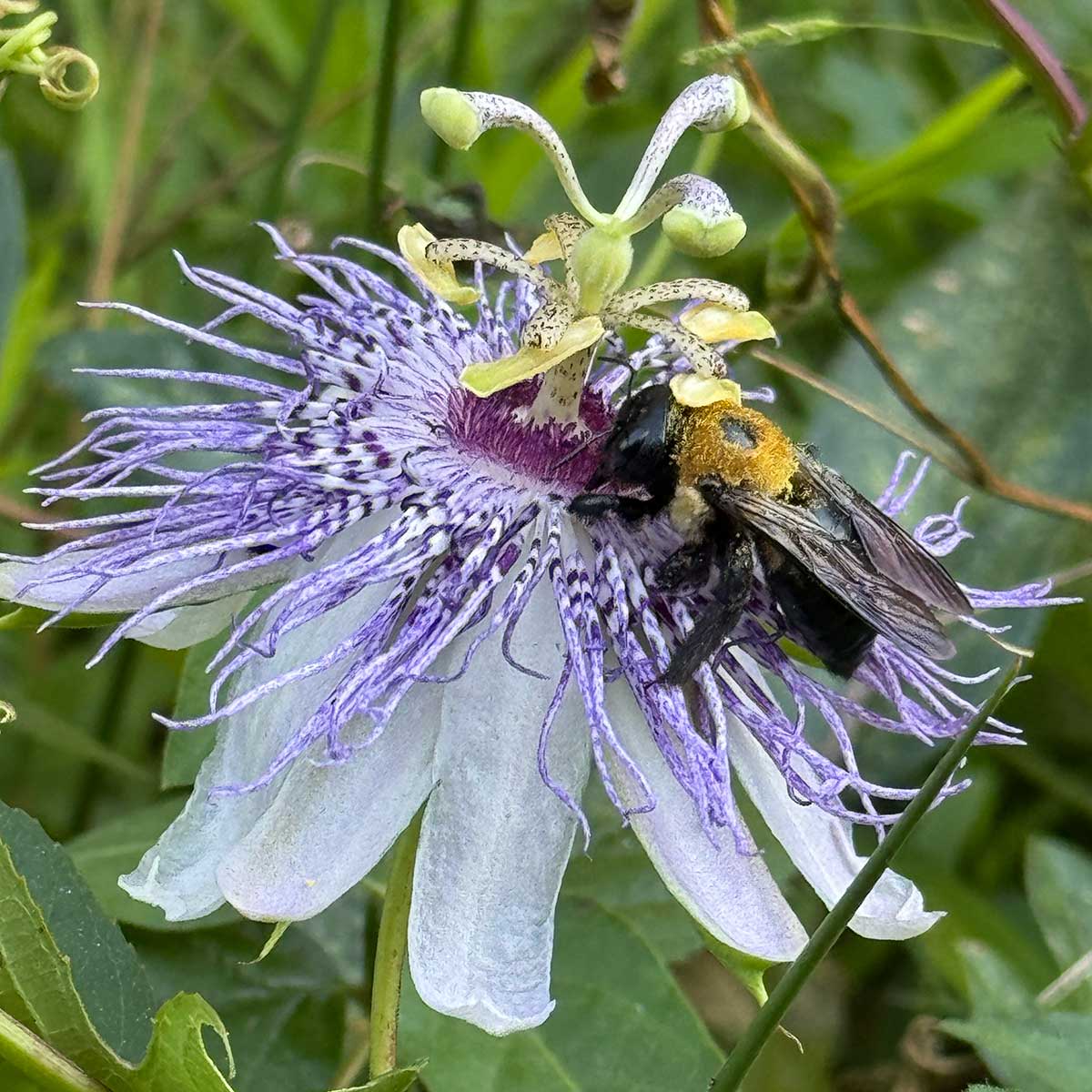
Purple Passionflower
Passiflora incarnata
Blooms in mid-summer to early fall
Perennial
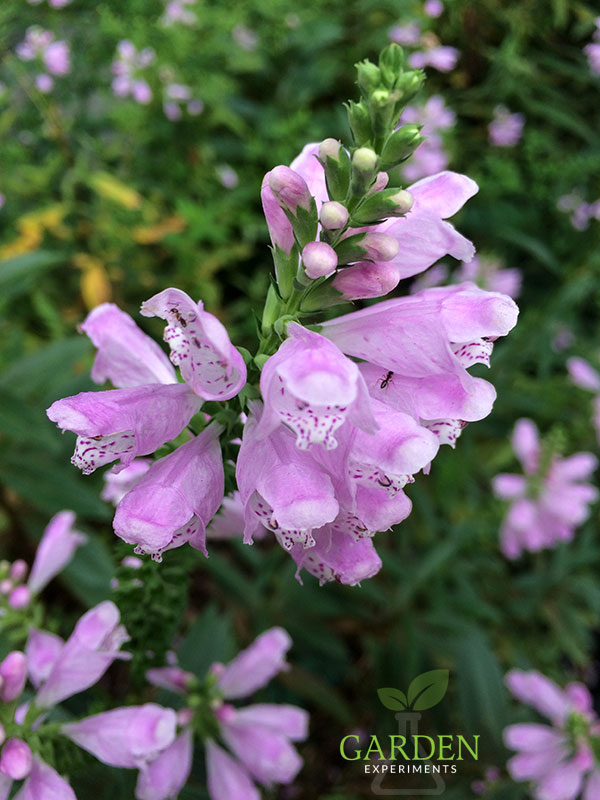
Obedient plant
Physostegia virginiana
Blooms late summer to fall
Perennial
Native salvias, bee balm, asters, and others are great, but the fritillaries also love to feed on lantana, zinnias, blue anise sage, Tithonia, pineapple sage, and other plants.
Nonnative Nectar Plants for Gulf Fritillary Butterflies
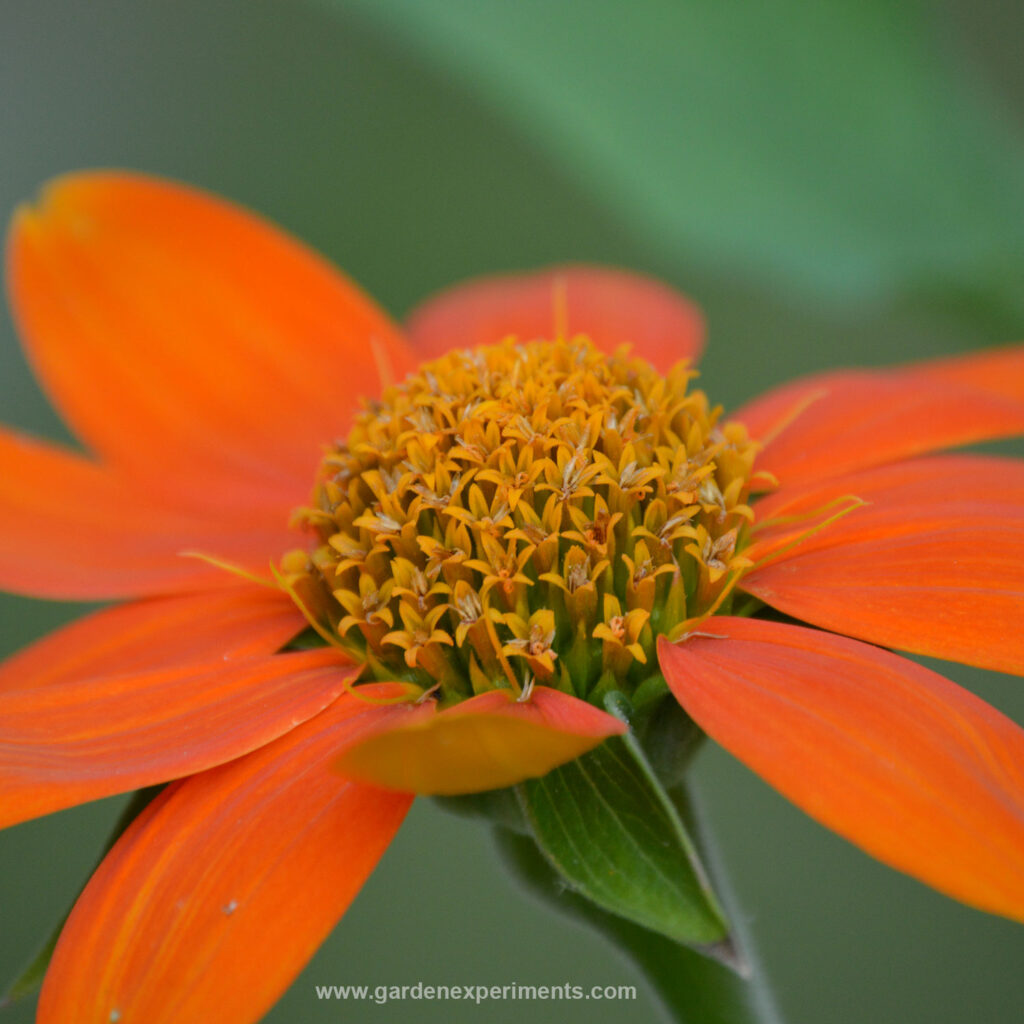
Mexican sunflower
Tithonia rotundifolia
Blooms in mid-summer to fall
Annual
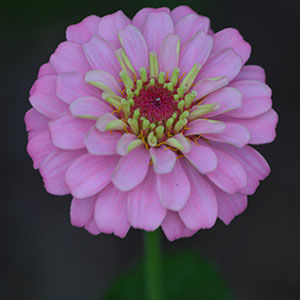
Zinnias
Zinnia spp.
Blooms in summer
Annual
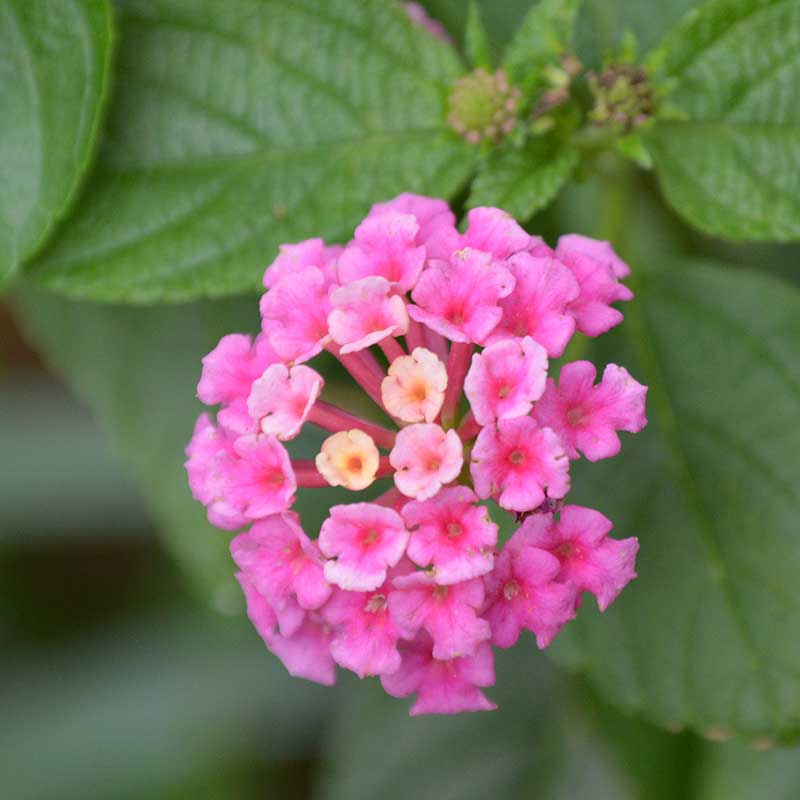
Lantana
Lantana spp.
Blooms late spring to late fall
Perennial
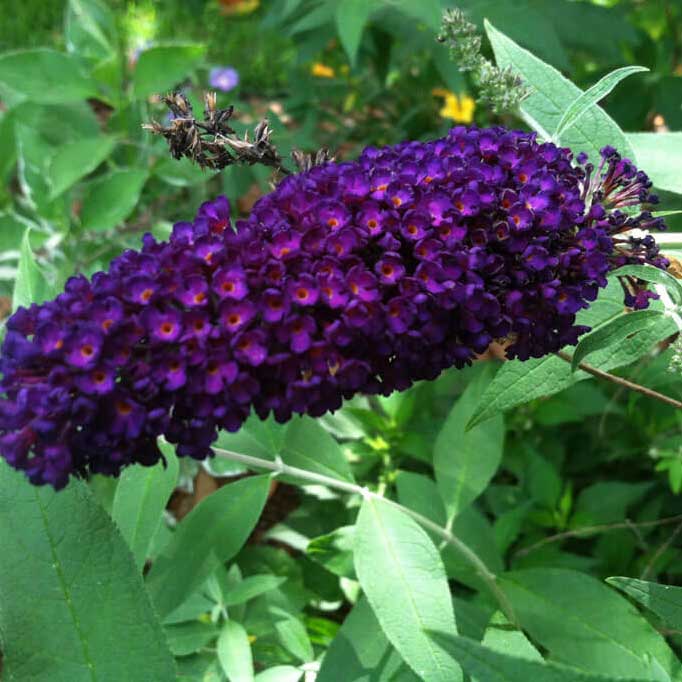
Butterfly bush
Buddleia spp.
Blooms in mid-summer to fall
Perennial
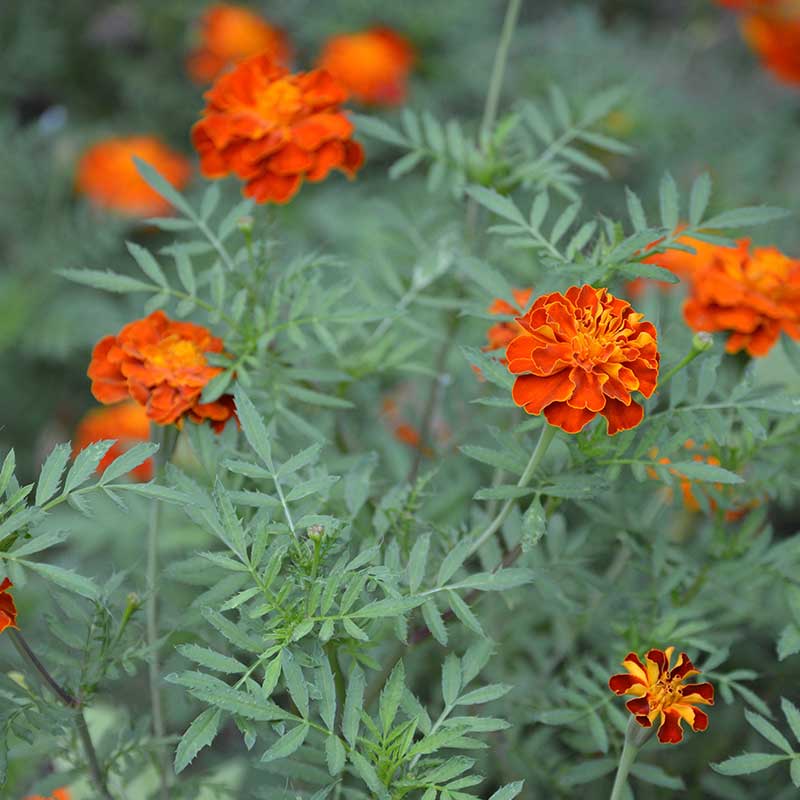
Marigolds
Tagetes spp.
Blooms in late spring to fall
Annual
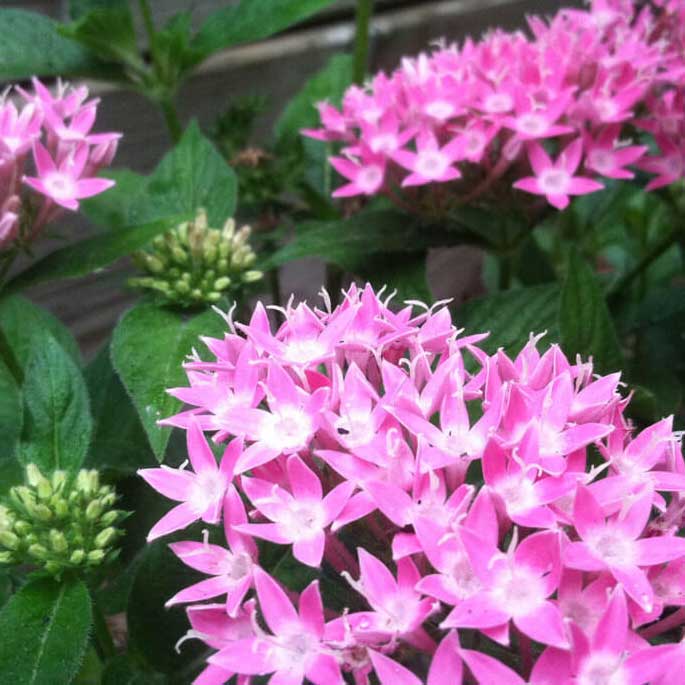
Pentas
Pentas spp.
Blooms late spring to late fall
Annual
More Flowering Plants for Butterfly Gardens
See a detailed list of flowering plants that provide nectar and host plants for butterflies.
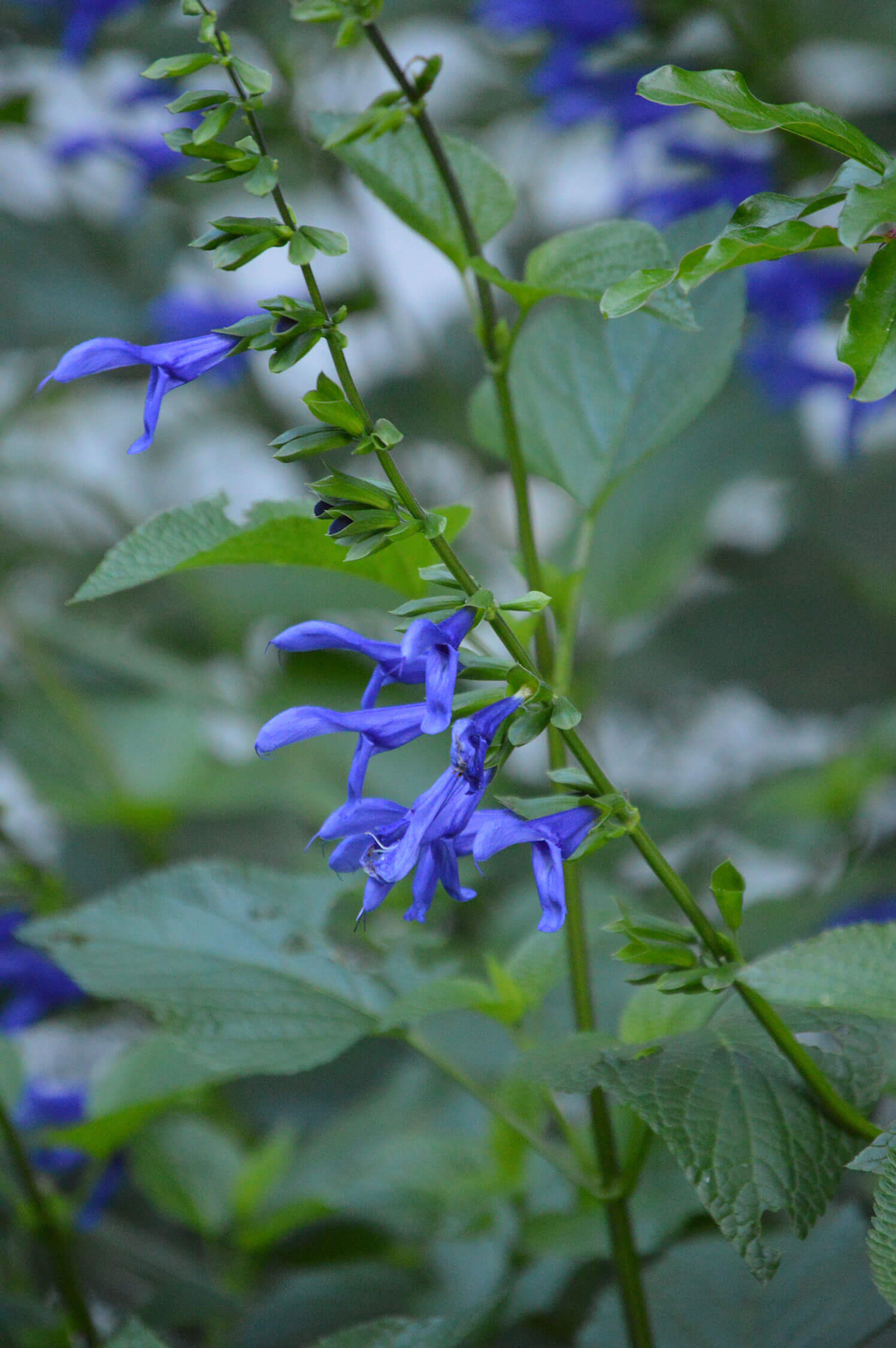
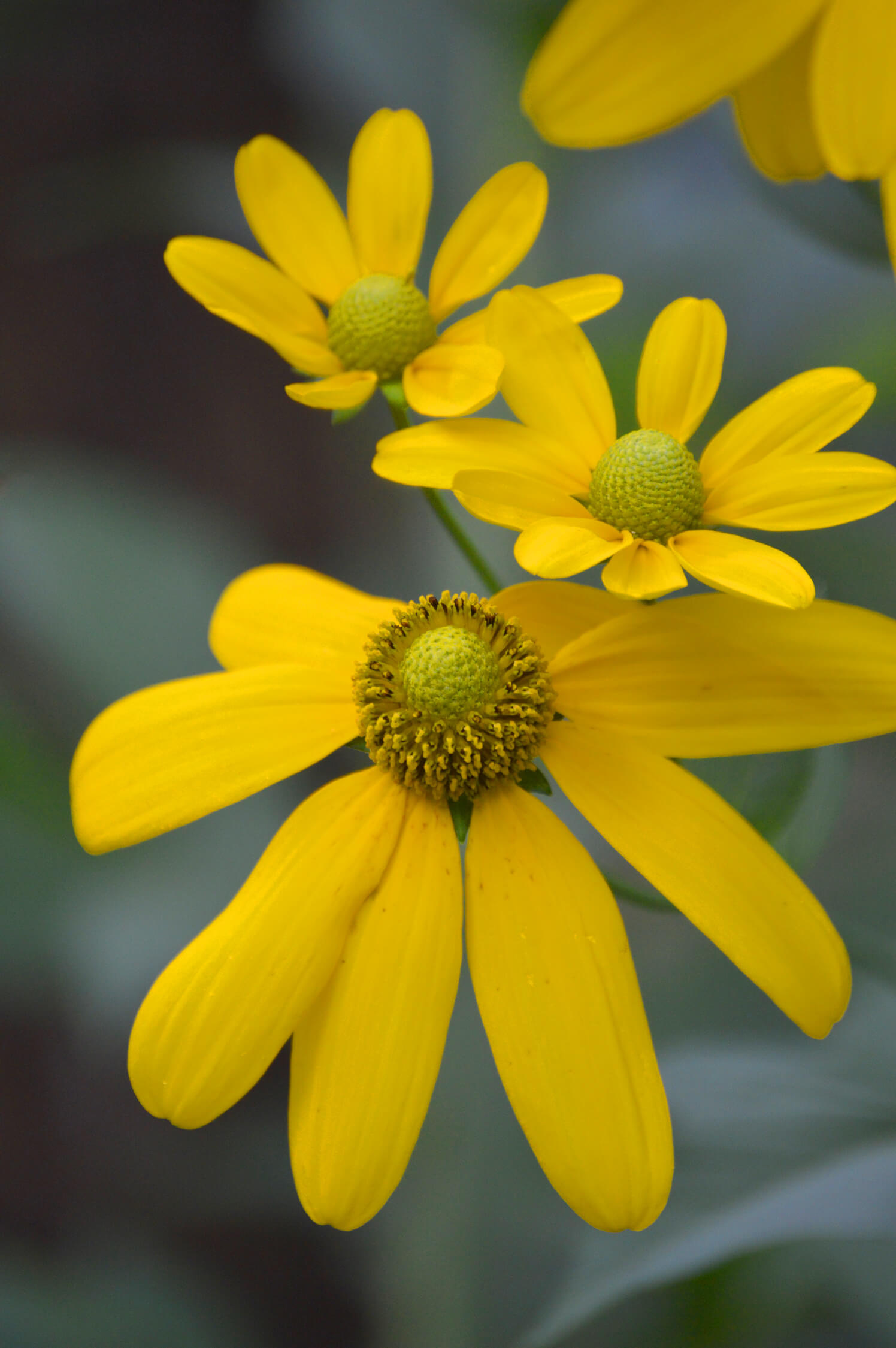
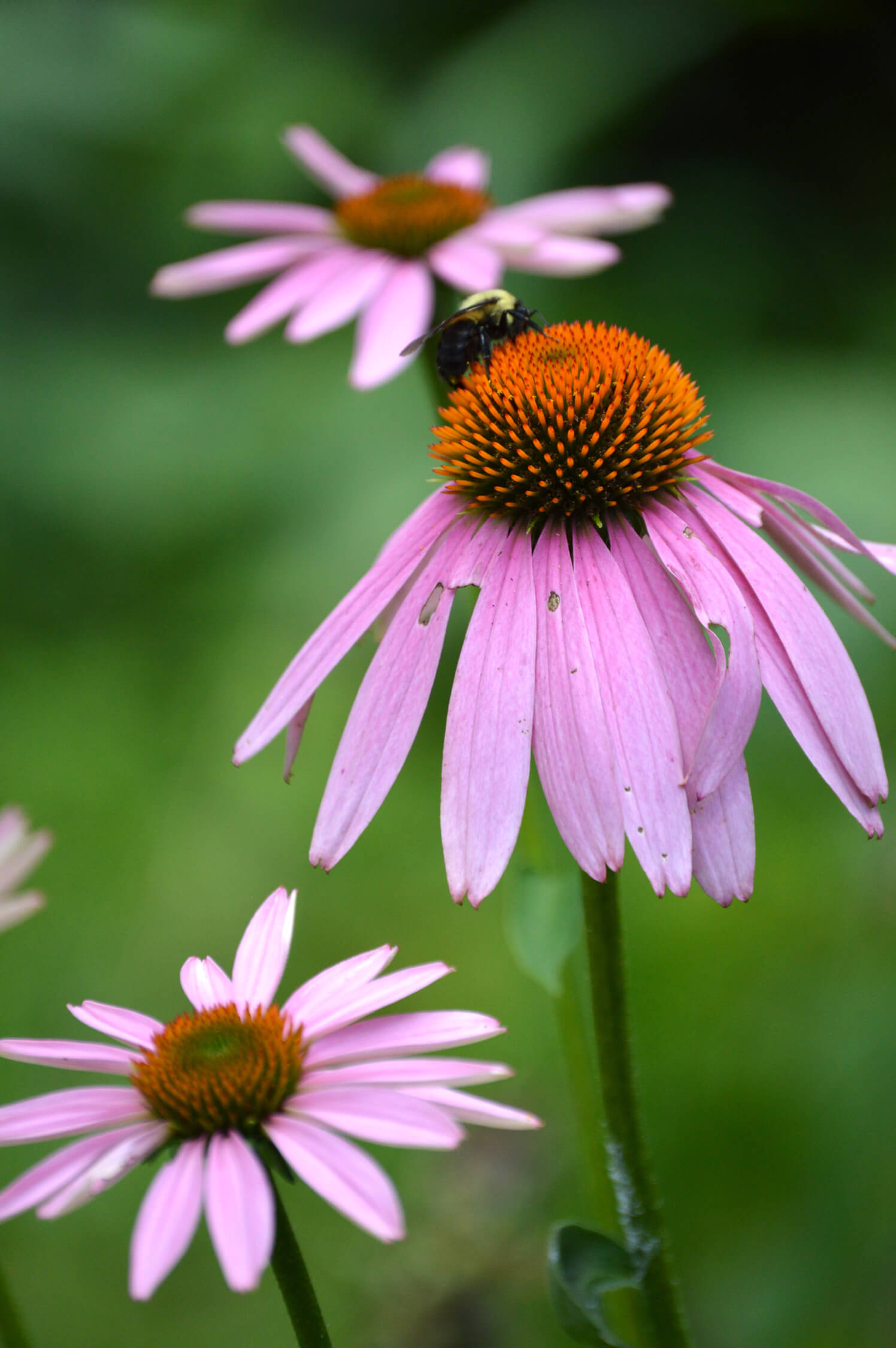
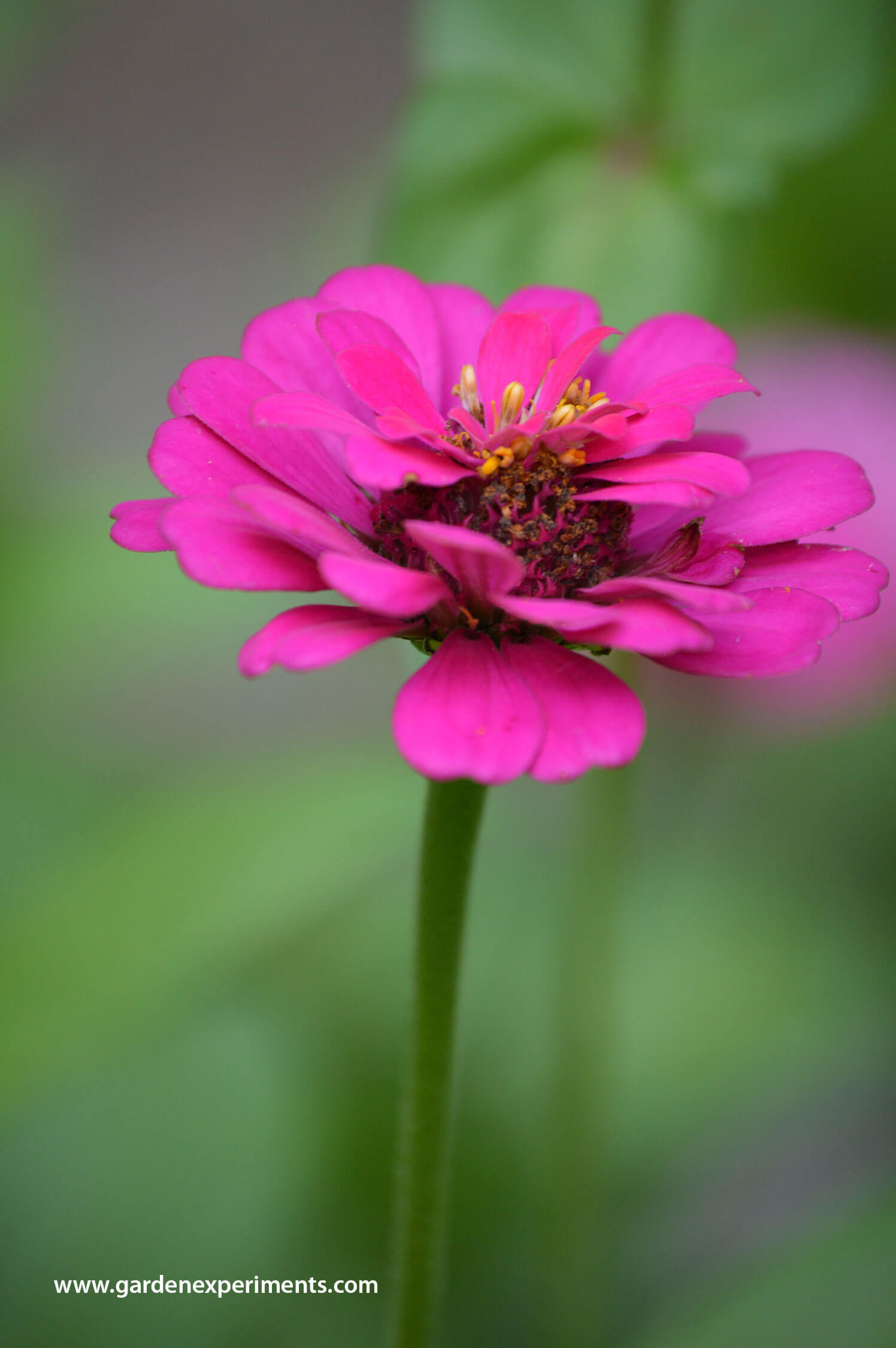
Plants for Butterflies to Use For Shelter & Rest
When planning your butterfly garden, don’t forget to include plants that offer newly hatched butterflies and older butterflies protection from predators and strong weather. Tall grasses, bushes, small trees, and other plants can provide places for the butterflies to hide or rest.
In some cases, you can find shrubs that provide both nectar for butterflies and offer protection. The buttonbush can provide food for the Gulf Fritillary butterflies, and they can use it for shelter.
As I have mowed our front lawn, I have had to pick up and move freshly hatched butterflies (as their wings are too wet). Usually, I place them in tall grass or a nearby shrub to give them a safe area to let their wings dry.
Don’t Forget the Water
Butterflies won’t typically drink from birdbaths, fountains, or other garden water features. Instead, they get their water from puddling – sucking up liquid from wet soils (Source: UGA Cooperative Extension). By doing this, the butterfly also absorbs necessary nutrients from the soil with the liquid.
To provide water for butterflies, you can try one of these three options:
- create a puddling area
- set up a puddling dish
- set up an insect watering dish
- install a fruit feeder
This publication by the National Wildlife Federation provides details on each of these butterfly water sources (PDF).
